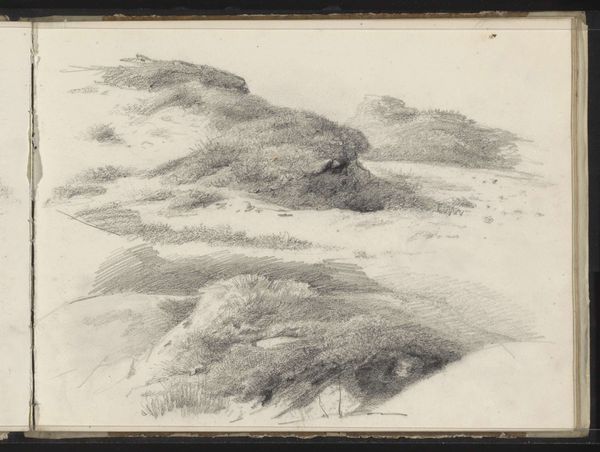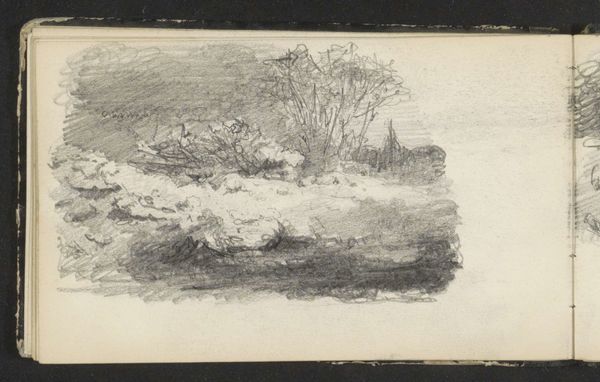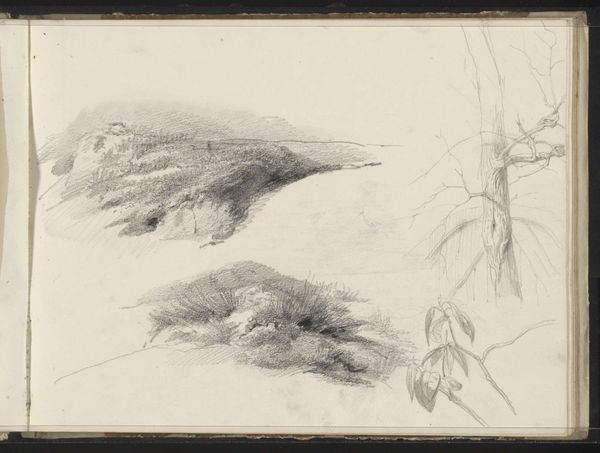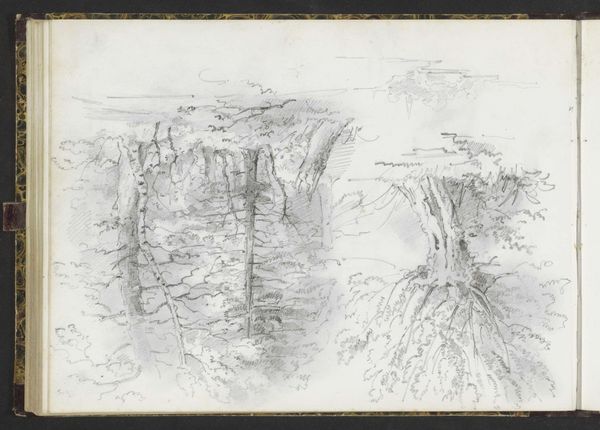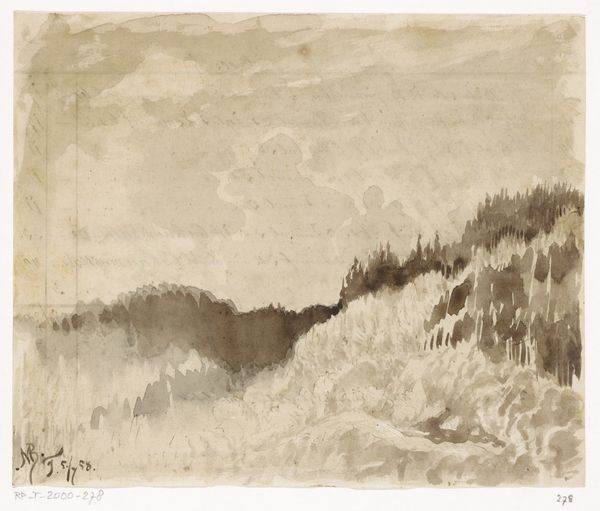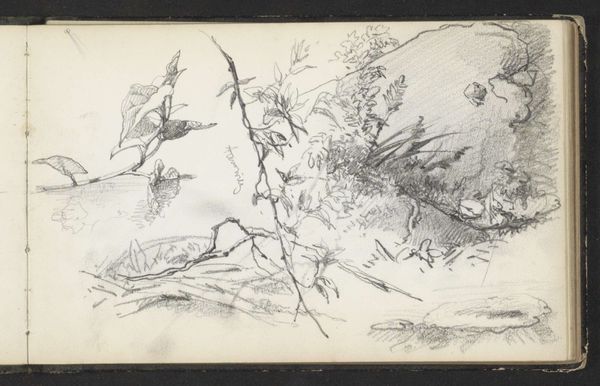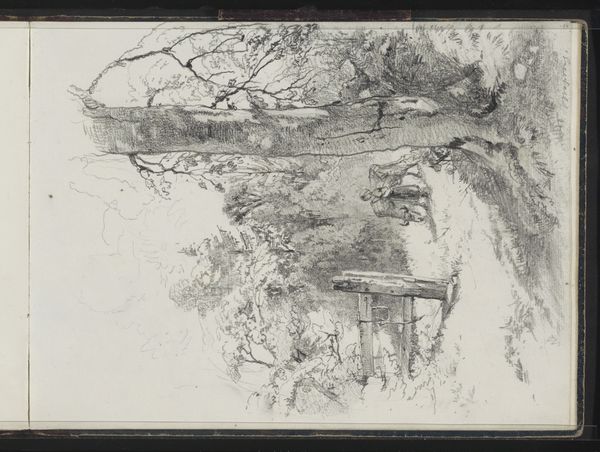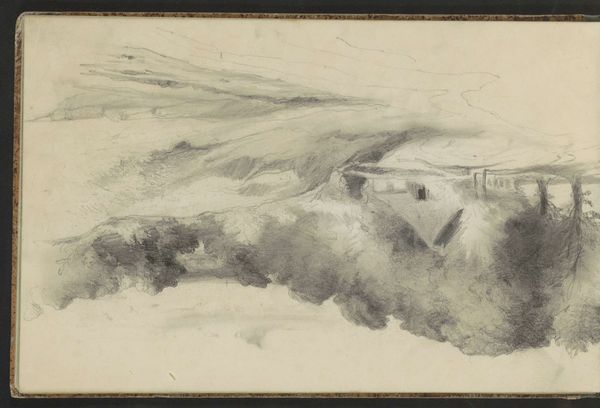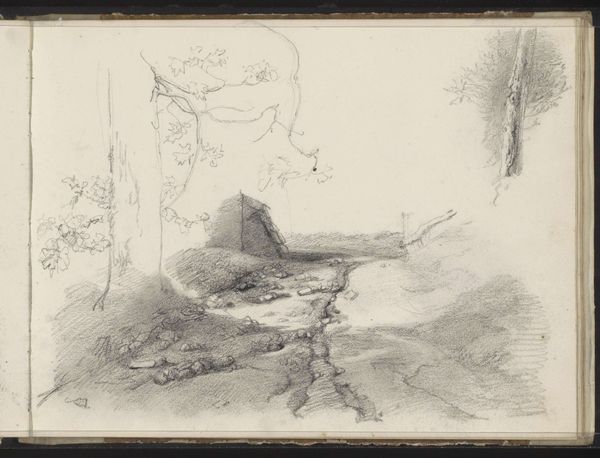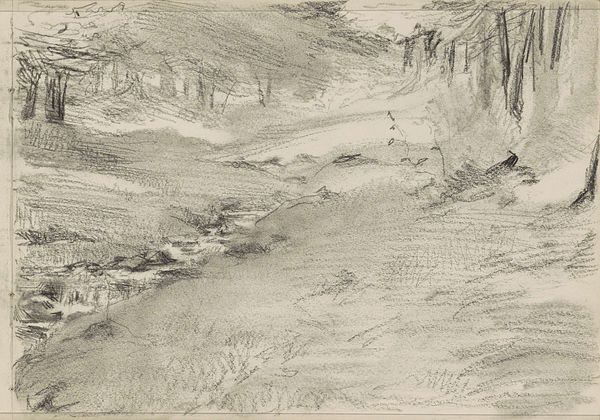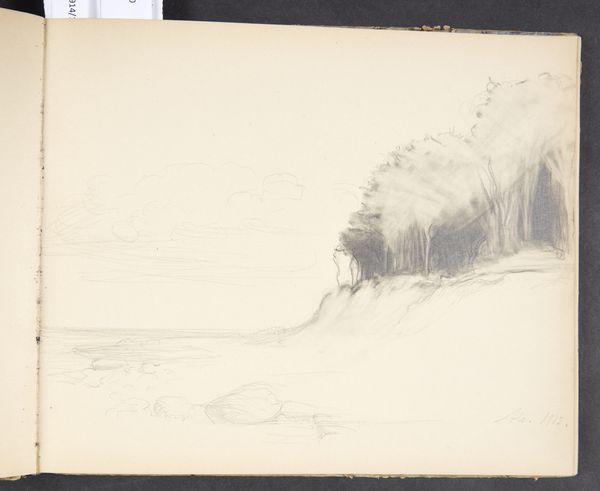
drawing, pencil
#
drawing
#
pencil sketch
#
landscape
#
pencil
#
realism
Copyright: Rijks Museum: Open Domain
Curator: Welcome to the Rijksmuseum. We're standing before Maria Vos's "Landschappen met grassen," or "Landscapes with Grasses," a drawing created sometime between 1834 and 1906. Editor: My initial impression is one of understated elegance. The simplicity of the pencil medium truly emphasizes the artist's sensitivity to form and texture. It's a study in tonal variation. Curator: Indeed. And when considering the time period, one might wonder about Vos's positioning within a predominantly male artistic landscape. The very act of observing and meticulously documenting these humble patches of nature can be viewed as a subtle act of asserting her presence and vision in a world that often overlooked female perspectives. The grass almost acts like the hair and curves in feminist figurative painting. Editor: A valid point. Though I'm drawn to the pure visual language here. Look at the contrast between the delicate hatching that defines the grassy clumps and the broader strokes that model the landforms. She teases a detailed view, but the image, from an indexical point of view, appears only partially built and constructed, much like reality when viewing an environment at a fleeting pace. The composition is divided horizontally, allowing our eyes to contrast between two approaches that complement each other very elegantly. It shows a mastery of mark-making. Curator: Consider, too, the socio-political context. During the 19th century, rapid industrialization was transforming the Dutch landscape. Vos's focus on these small, seemingly insignificant landscapes could be seen as a form of quiet resistance, a celebration of the natural world threatened by progress and male oriented industries. It invites us to look more closely at the marginalized aspects of our surroundings. The land, so feminized in our collective imagination. Editor: A fascinating perspective. For me, though, the power lies in the distillation of form. Vos strips away the superfluous and presents the essence of landscape, the foundational elements from which grander scenes are built. This pure focus is a statement, perhaps. Curator: Ultimately, I think the drawing allows for a convergence of perspectives, doesn't it? A celebration of both the formal beauty of nature and the subtle ways in which art can challenge social norms and invite deeper reflection about environment and the role that we all play in our interaction with it. Editor: Yes, and through that interaction we appreciate Vos's technical finesse in rendering that nature and the impact that the smallest change or mark in a plane or dimension produces when put together with other similar acts.
Comments
No comments
Be the first to comment and join the conversation on the ultimate creative platform.
